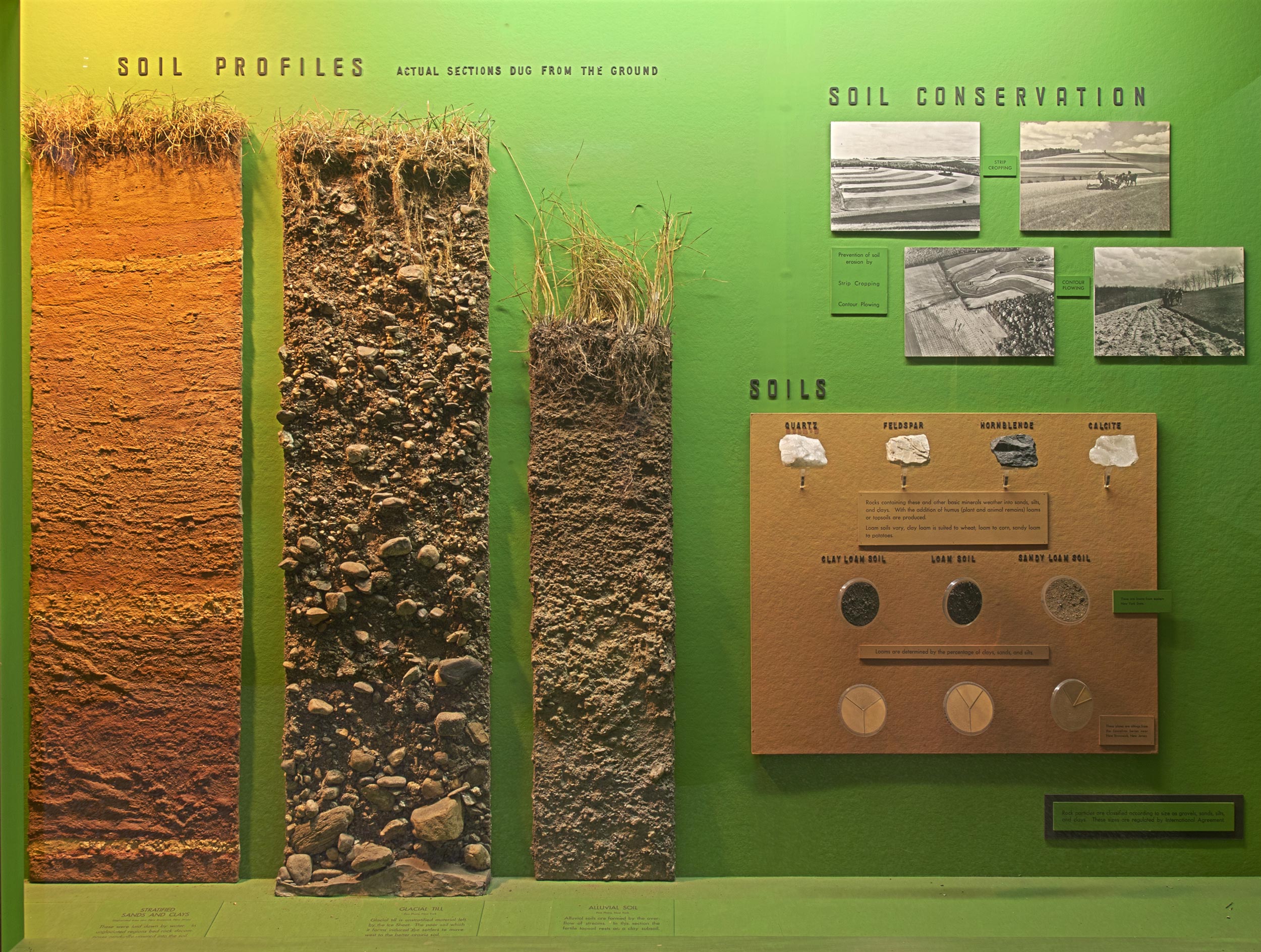Stratified Sands and Clays
Unglaciated area near New Brunswick, New Jersey
These were laid down by water. In unglaciated regions bedrock decomposes gradually upward into the soil.

Glacial Till
Pine Plains, New York
Glacial till is unstratified material left by the ice sheet. The poor soil which it forms induced the settlers to move west to the better prairie soil.

Alluvial Soil
Pine Plains, New York
Alluvial soils are formed by the overflow of streams.
In this section the fertile topsoil rests o a clay subsoil.

Soils
Rocks containing these and other basic minerals weather into sands, silts, and clays. With the addition of humus (plant and animal remains) loams or topsoils are produced.
Loam soils vary; clay loam is suited to wheat; loam to corn; sandy loam to potatoes.
Loams are determined by the percentage of clays, sands, and silts.
These plates are siftings from the Sassafras Series near New Brunswick, New Jersey
These are loans from eastern New York State.
Rock particles are classified according to size as gravels, sands, silts, and clays. These sizes are regulated by International Agreement.

Soils and Soil Conservation
Part of Hall of New York State Environment.

